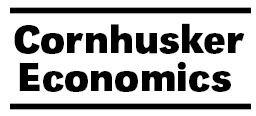Agricultural Economics, Department of

Cornhusker Economics
Date of this Version
10-1-2008
Document Type
Newsletter Issue
Citation
Cornhusker Economics
Abstract
Cooperative organizations constitute an integral part of the increasingly industrialized agri-food system, accounting for 25 to 30 percent of total farm supply and marketing expenditures. When compared to profit-maximizing investor-owned firms (IOFs), a distinguishing feature of cooperatives (co-ops) is that the owners are also the users of the services provided by the organization. With members as both owners and users of its services, a co-op is typically assumed to focus on maximizing member welfare rather than profits.
The economic ramifications of the different objective functions of the cooperative organization have received considerable attention in the relevant literature, with the main focus being on the effect of different types of co-ops on the equilibrium conditions of various mixed market settings. A key result of this literature is that the presence of co-ops results in more competitive conduct and increased welfare.


Comments
Published in Cornhusker Economics, 10-1-08. Produced by the Cooperative Extension, Institute of Agriculture and Natural Resources, Department of Agricultural Economics, University of Nebraska – Lincoln. http://www.agecon.unl.edu/Cornhuskereconomics.html